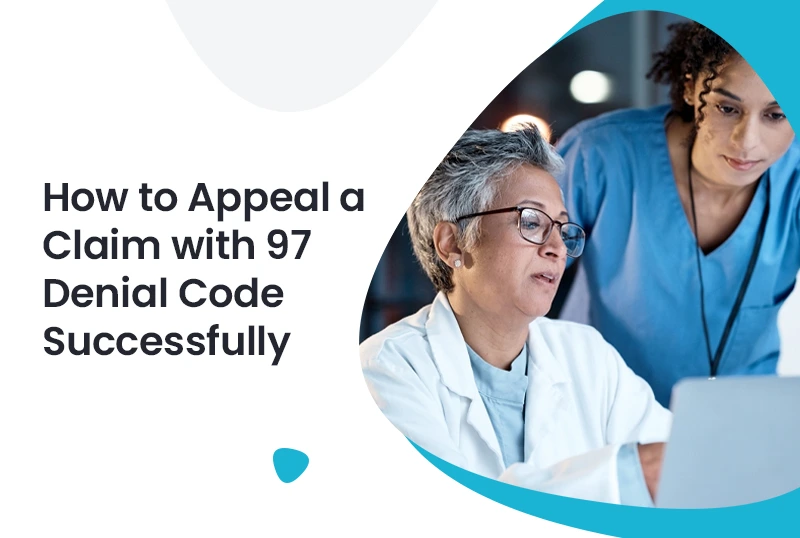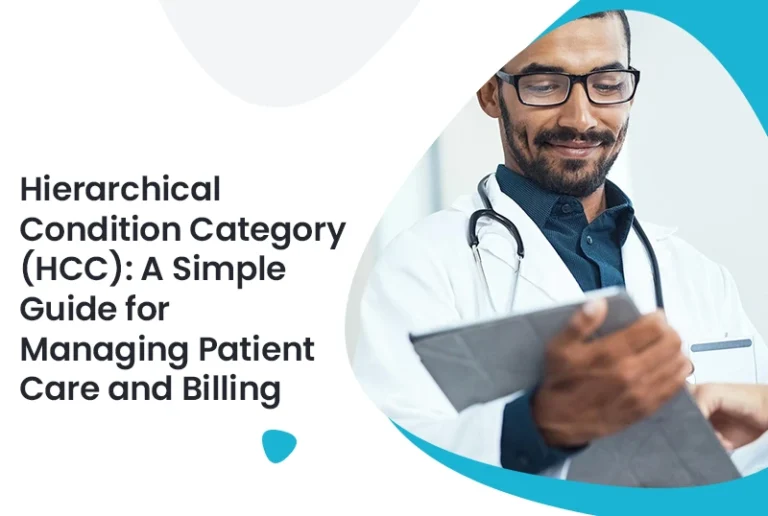A 97 denial code means a billed service isn’t separately payable as it’s bundled with another procedure. Quick, accurate appeals can help recover lost revenue. Among the most frequent and misunderstood rejections is the 97 denial code. This code signifies that the service billed is not separately payable because it is included in the payment for another billed procedure.
While this denial may appear straightforward, the nuances behind it require careful analysis, solid documentation, and strategic appeals. Whether you’re a small clinic or a mid-sized group practice, understanding how to handle this denial code can make a big difference to your bottom line. That’s why many providers are now seeking expert help from medical billing services for small practices to minimize denials and improve claim acceptance rates.
What Is the 97 Denial Code?
Payers issue the 97 denial code when they bundle a service with another. They consider the procedure or service already included in a different code submitted for the same patient visit. The National Correct Coding Initiative (NCCI) sets the rules that define how specific CPT or HCPCS codes are grouped or bundled.
Common Scenarios Leading to a 97 Denial Code:
- A physical therapy session billed alongside an evaluation on the same day without an appropriate modifier.
- An office procedure and an office visit billed together, where the payer considers the procedure as inclusive of the evaluation.
- Services rendered in post-operative periods that fall under global surgical packages but are billed separately.
- Use of incorrect or missing modifiers like 59, 25, or GV.
If you’ve received this denial, don’t panic—it can be appealed with proper steps, documentation, and billing insight.
Reasons Why the 97 Denial Code Occurs
Understanding the root causes of this denial helps in both correcting it and preventing future recurrences.
Top reasons include:
- Lack of Modifiers: When procedures are performed on the same day but no modifier indicates that services are distinct.
- Improper Code Pairing: Billing two codes together that are restricted due to NCCI edits.
- Global Period Billing: Billing separately for services already paid under global surgical fees.
- Payer-Specific Rules: Some payers may have unique bundling policies beyond CMS guidelines.
Addressing these issues requires a solid understanding of procedural coding and payer contract policies.
Explore the Full Guide: N130 Denial Code in Medical Billing: What It Means and How to Resolve It
How to Appeal a Claim with 97 Denial Code
Appealing a 97 denial code claim effectively demands a step-by-step process that includes both clinical and administrative input.
1. Review the Remittance Advice or EOB Carefully
Start by reviewing the Explanation of Benefits (EOB) or Electronic Remittance Advice (ERA). Identify the services and CPT/HCPCS codes involved. Look for any additional remark codes or information that clarifies what the payer believed was bundled.
2. Analyze Documentation for Medical Necessity
Next, gather your documentation. Confirm that the services:
- Were distinct and separately identifiable
- Were necessary under the patient’s condition
- Occurred at different times or anatomical sites, if applicable
- Warrant the use of modifiers like 59, 25, or GV
Medical necessity is often the core issue with a 97 denial. If the documentation doesn’t clearly distinguish the services, update your records and prepare a detailed explanation.
3. Use Modifiers Correctly
In many cases, you’ll need to resubmit the claim with the appropriate modifier. Here’s a guide for common modifiers that help resolve 97 denials:
- Modifier 59: Indicates a distinct procedural service not usually reported together.
- Modifier 25: Used when an E/M service is performed separately on the same day as another service.
- Modifier GV: Applicable when a non-hospice physician treats a patient enrolled in hospice for a condition unrelated to their terminal illness.
Resubmitting claims without correcting modifiers is one of the biggest reasons denials remain unresolved.
4. Submit a Strong Appeal Letter
If correction alone doesn’t work, submit an appeal letter that includes:
- Patient name, ID, and DOS (date of service)
- Explanation of denial and reasoning for reconsideration
- Evidence of distinct services rendered (charts, notes)
- Correct coding references (e.g., CPT manual, NCCI)
- Rebilling with proper modifiers (if applicable)
A proactive appeal supported by solid documentation improves the odds of overturning the denial. Clinics using modern (RCM) Services typically see higher success rates due to experienced teams and automation tools that flag potential denials before submission.
Preventing 97 Denials in the Future
The best way to handle a 97 denial code is to prevent it. Here are a few practices to avoid repeat rejections:
- Regular Coding Training: Make sure billing and clinical staff are updated on CPT and NCCI rules.
- Modifier Accuracy: Use them precisely—too much or inappropriate use can also trigger denials.
- Audit Claims: Conduct regular internal audits of denied claims.
- Use Billing Tools: Invest in software with built-in CCI edits.
- Know Payer Rules: Each insurance payer may have variations in what they consider bundled.
An essential part of understanding denial causes lies in knowing the service categorization rules. Ensure your billing staff are aware of the TOS full form in medical billing, which stands for Type of Service. TOS helps identify the nature of each billed service and how it’s handled by payers.
Real-World Example
A multi-specialty clinic in Houston regularly billed both E/M and injection services during office visits. Despite legitimate documentation, they faced numerous 97 denials. On audit, it was discovered that modifier 25 was inconsistently applied. The billing team standardized documentation templates, retrained on modifier usage, and implemented software alerts. Within 60 days, their 97 denials dropped by 72%.
Why Addressing 97 Denials Is Critical
Each denied claim represents a delay in payment or a total loss in revenue. When unresolved, 97 denials can accumulate and create significant gaps in monthly collections. That’s why providers—especially those without a full-time in-house billing team—opt to work with experts like Precision Hub, who offer targeted solutions tailored to practice size and specialty.
Don’t let coding confusion jeopardize your financial health. Strategic billing, regular audits, and professional support can help reclaim denied revenue and prevent future losses.
Final Thoughts
Handling the 97 denial code requires more than resubmitting a claim—it demands insight, accuracy, and strong documentation. With the right tools and knowledge, you can recover denied payments and improve your revenue cycle.
Stay ahead of denial trends, train your team consistently, and lean on experts when needed. For reliable guidance and billing support, connect with Precision Hub—where your practice’s financial health is our priority.
FAQs (Frequently Asked Questions)
Q1. What is the meaning of 97 denial code in medical billing?
The 97 denial code means that a service is bundled into another and is not payable separately.
Q2. Can you appeal a 97 denial code successfully?
Yes, with proper documentation and modifier use, you can often overturn the denial.
Q3. Which modifiers can help resolve a 97 denial?
Common modifiers include 59, 25, and GV, depending on the context and service provided.
Q4. How long does the appeal process take?
It varies by payer, but most appeals are resolved within 30 to 60 days when submitted correctly.
Q5. Can outsourcing billing prevent 97 denials?
Yes. Working with a specialized billing provider often leads to fewer denials and more accurate claims from the start.






